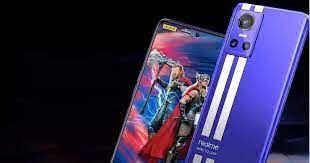Realme’s 9-Minute Full Charge Phone: Sparked a Panic and Sold Out in Just Two Hours
With its ground-breaking innovation—a phone that can be completely charged in only 9 minutes—Realme, a well-known brand in the smartphone market, has once again swept the market. Consumers and tech aficionados are in awe of this amazing achievement, which has sparked a craze that resulted in the phone being totally sold out within only two hours of its release. We’ll go into the specifics of this remarkable gadget, the technology that made it possible, and the ramifications it has for the way smartphones will charge in the future in this article.
The Unveiling: A Strike of Insanity
When Realme announced a phone that could be completely charged in less than 10 minutes, it almost sounded too wonderful to be true. However, the company that is recognized for pushing the limits of technology stuck by its assertion and released this ground-breaking product on the market. The answer? Nothing less than utter amazement.
An Instant Hit: The Purchase Rush
Customers flocked to purchase this technical masterpiece as soon as it reached the stores, both online and offline. The phone immediately became the talk of the town because to its svelte form, high-end capabilities, and most significantly, the promise of ultra-fast charging.
How It Works: The Science of Speed
Technology’s Supercharge: The Engine
Realme’s unique Supercharge Technology is to thank for the improvement in charging speed. The firm was able to do what was previously thought to be impossible by employing cutting-edge battery materials and a cutting-edge charging algorithm. The battery in the phone is designed to withstand strong charging currents without endangering its wellbeing or safety.
Graphene’s Function: A Game-Changer
Graphene, a substance recognized for its extraordinary conductivity and strength, is at the core of this invention. Realme used graphene’s potential to speed up electron movement inside battery cells. This innovation guarantees that the battery maintains its life through several charge cycles in addition to speeding up charging.
The Ripple Effect’s Effects on Industry
The introduction of Realme’s 9-minute full charge phone has shocked the smartphone market and forced rivals to reassess their own charging methods. This invention represents a turning point that might lead to a revolution in how we see and use technology.
Changing What Users Expect
The “charge anxiety” that often afflicts smartphone users could soon disappear. Realme’s invention raises the bar for other manufacturers to follow suit by creating a new benchmark for charging ease. Customers are more likely to expect quick and efficient charging as a basic component of their future technology.
A Change in the Technological Culture
This incident highlights how important R&D is in the realm of technology. Manufacturers are now required to give equal importance to the speed and simplicity of charging as well as the functionality and features of their products. Time is of the importance as we enter a new age, and creative ideas like Realme’s might influence the future of the whole sector.
What Lies Ahead on the Road?
Structure of Charging Systems Evolution
The success of Realme might spark changes that go beyond smartphones. Electrical engineering and sustainable energy solutions may progress as a result of the need for more powerful charging infrastructure in both private and public settings.
A Sneak Peek at the Future
Imagine a future where a little coffee break may significantly recharge your smartphone. Or when careful preparation to save battery life is no longer necessary for lengthy travels. Realme’s innovation raises questions about what other facets of our tech-dependent lives could change in light of these possibilities. Realme’s 9-minute full charge phone has revolutionized the smartphone market and caused a sellout in a matter of hours. This invention, which is based on Supercharge Technology and makes use of graphene, shows the potential for quick and effective charging. Users might excitedly anticipate a future where their gadgets charge as quickly as their lives move while the business struggles with this paradigm change.







